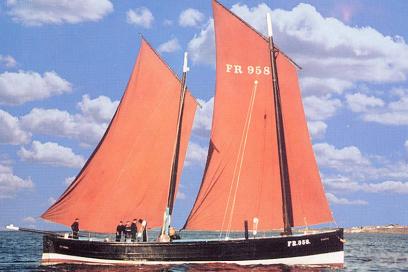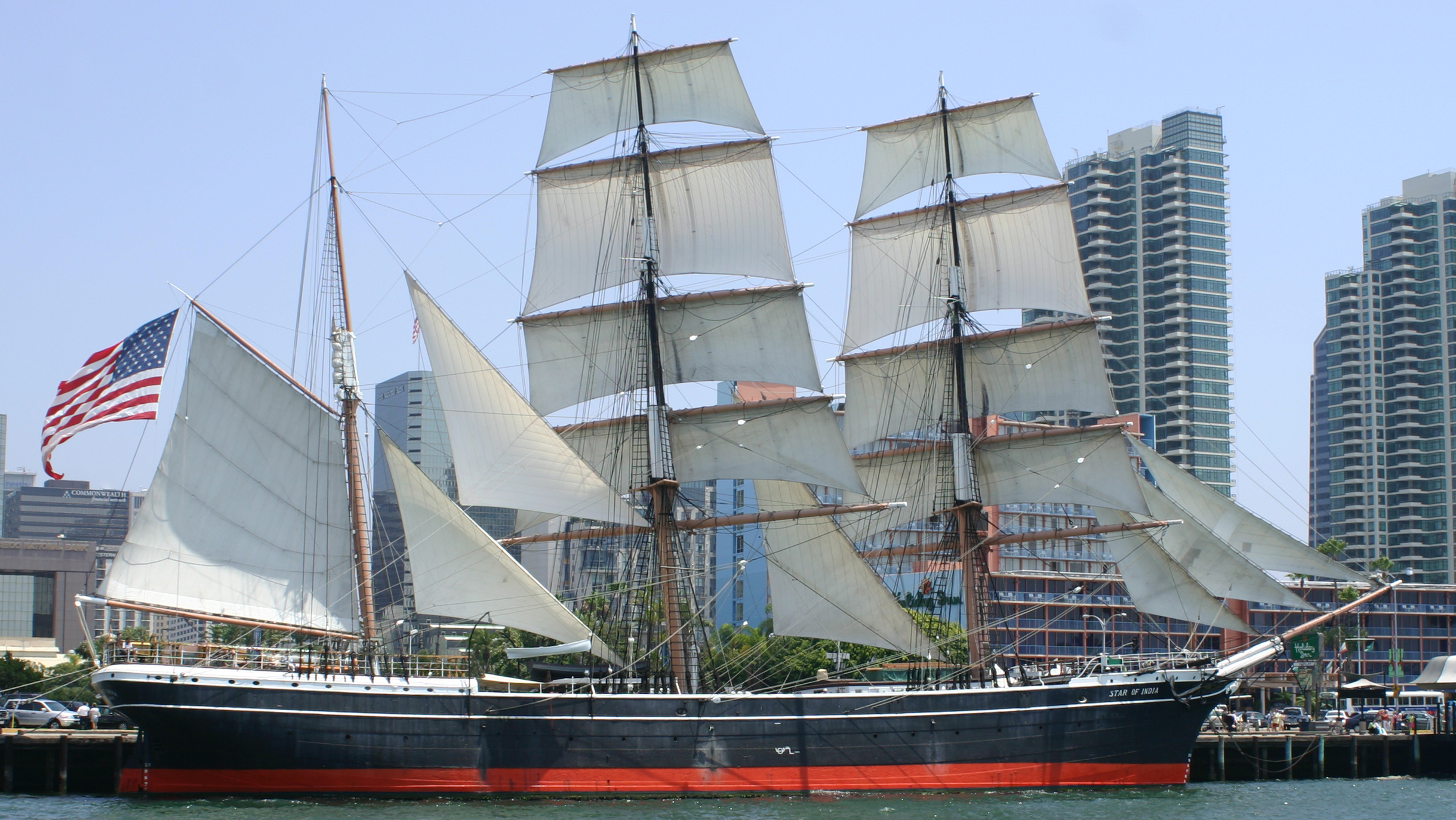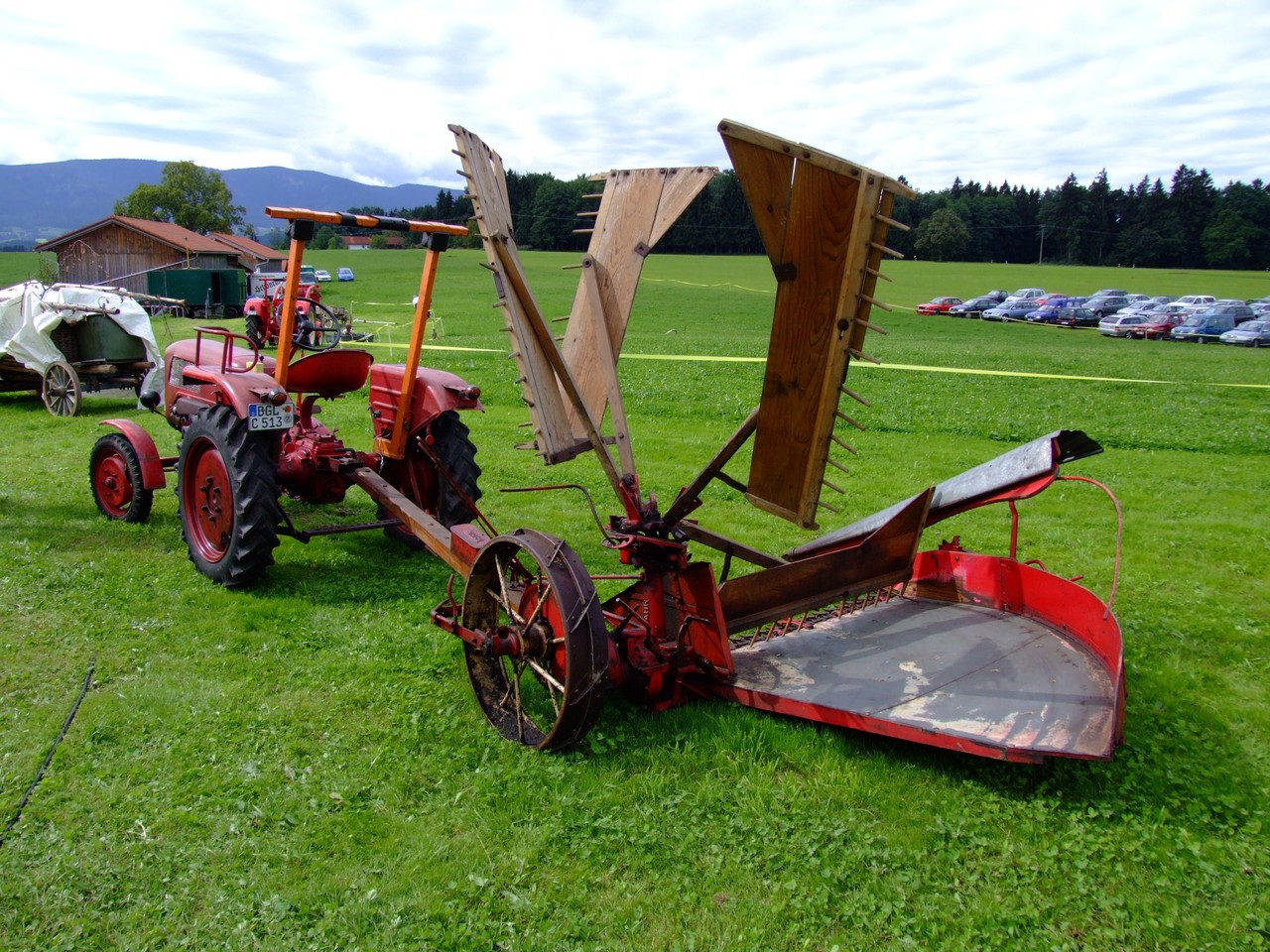|
Luggers
A lugger is a sailing vessel defined by its rig, using the lug sail on all of its one or several masts. They were widely used as working craft, particularly off the coasts of France, England, Ireland and Scotland. Luggers varied extensively in size and design. Many were undecked, open boats, some of which operated from beach landings (such as Hastings or Deal). Others were fully decked craft (typified by the Zulu and many other sailing drifters). Some larger examples might carry lug topsails. Luggers were used extensively for smuggling from the middle of the 18th century onwards; their fast hulls and powerful rigs regularly allowed them to outpace any Revenue vessel in service. The French three-masted luggers also served as privateers and in general trade. As smuggling declined about 1840, the mainmast of British three-masted luggers tended to be discarded, with larger sails being set on the fore and mizzen. This gave more clear space in which to work fishing nets. Local ... [...More Info...] [...Related Items...] OR: [Wikipedia] [Google] [Baidu] |
Sail Plan
A sail plan is a description of the specific ways that a sailing craft is rigged. Also, the term "sail plan" is a graphic depiction of the arrangement of the sails for a given sailing craft.> In the English language, ships were usually described, until the end of the eighteenth century, in terms of their type of hull design. Using the type of rig as the main type identifer for a vessel only became common in the nineteenth century. This is illustrated by the terminology for ships in the large fleet of colliers that traded to London from the coal ports of the Northeast of England (of which was a well-known example). Many of these full-rigged ships (square rigged on all of three masts) had the hull type "bark"another common classification was "cat". In the second half of the eighteenth century, the square sails on the mizzen were often eliminated. The resulting rig acquired the name of the hull type: initially as "bark" and soon as "barque". This explains the Royal Navy's descripti ... [...More Info...] [...Related Items...] OR: [Wikipedia] [Google] [Baidu] |
Deal, Kent
Deal is a coastal town in Kent, England, which lies where the North Sea and the English Channel meet, north-east of Dover and south of Ramsgate. It is a former fishing, mining and garrison town whose history is closely linked to the anchorage in the Downs. Close to Deal is Walmer, a possible location for Julius Caesar's first arrival in Britain. Deal became a 'limb port' of the Cinque Ports in 1278 and grew into the busiest port in England; today it is a seaside resort, its quaint streets and houses a reminder of its history along with many ancient buildings and monuments. In 1968, Middle Street was the first conservation area in Kent. The coast of France is approximately from the town and is visible on clear days. The Tudor-era Deal Castle, commissioned by then- King, Henry VIII, has a rose floor plan. History Deal is first mentioned as a village in the Domesday Book of 1086, where it appears as ''Addelam''. It is referred to as ''Dela'' in 1158, and ''Dale'' i ... [...More Info...] [...Related Items...] OR: [Wikipedia] [Google] [Baidu] |
Reaper In Sail
A reaper is a farm implement or person that reaps (cuts and often also gathers) crops at harvest when they are ripe. Usually the crop involved is a cereal grass. The first documented reaping machines were Gallic reapers that were used in Roman times in what would become modern-day France. The Gallic reaper involved a comb which collected the heads, with an operator knocking the grain into a box for later threshing. Most modern mechanical reapers cut grass; most also gather it, either by windrowing or picking it up. Modern machines that not only cut and gather the grass but also thresh its seeds (the grain), winnow the grain, and deliver it to a truck or wagon, called combine harvesters or simply combines, which are the engineering descendants of earlier reapers. Hay is harvested somewhat differently from grain; in modern haymaking, the machine that cuts the grass is called a hay mower or, if integrated with a conditioner, a mower-conditioner. As a manual task, cutting o ... [...More Info...] [...Related Items...] OR: [Wikipedia] [Google] [Baidu] |
Coble
The coble is a type of open traditional fishing boat which developed on the North East coast of England. The southernmost examples occur around Hull (although Cooke drew examples at Yarmouth, see his ''Shipping and Craft'' series of drawings of 1829); the type extends to Burnmouth just across the Scottish border. The distinctive shape of the boat — flat-bottomed and high-bowed — arose to cope with the particular conditions prevalent in this area. Flat bottoms allowed launching from and landing upon shallow, sandy beaches; an advantage in this part of the coast where the wide bays and inlets provided little shelter from stormy weather. However, fishermen required high bows to sail in the dangerous North Sea and in particular to launch into the surf and to land on the beaches. The design contains relics of Norse influence, though in the main it shows Dutch origin. A Scottish version of the coble, much shallower and beamier than the English type, serves for salmon-fishing ... [...More Info...] [...Related Items...] OR: [Wikipedia] [Google] [Baidu] |
Nobby (boat)
The nobby is an inshore sailing boat which was used as a traditional fishing boat around Lancashire and the Isle of Man. The Lancashire nobby originated in Morecambe Bay about 1840 and around Southport. It subsequently came into widespread use down the north west coast of England. The Manx nobby first appeared in the 1880s and was used around the Isle of Man. Many localities on the coast of Great Britain developed their own type of fishing boat adapted to local fishing and sea conditions, and the nobbies are examples of this.March (1969) Lancashire nobby The Lancashire nobby was primarily a shrimp commercial trawler, trawler towing Trawling, beam trawls sized for common "brown shrimp" (''Crangon crangon''), "pink shrimp" or "Aesop prawn" (''Pandalus montagui''), or flatfish. The nobby ranged in size from about for single-handed boats and from for two-man boats. They were all Mast (sailing), pole masted Cutter (ship), cutters with Gaff rig, gaff topsail. In the north west of Eng ... [...More Info...] [...Related Items...] OR: [Wikipedia] [Google] [Baidu] |
Fifie
The Fifie is a design of sailing boat developed on the east coast of Scotland. It was a traditional fishing boat used by Scottish fishermen from the 1850s until well into the 20th century. These boats were mainly used to fish for herring using drift nets, and along with other designs of boat were known as herring drifters. Design While the boats varied in design, they can be categorised by their vertical stem and stern, their long straight keel and wide beam. These attributes made the Fifies very stable in the water and allowed them to carry a very large set of sails. The long keel, however, made them difficult to manoeuvre in small harbours. Sailing Fifies had two masts with the standard rig consisting of a main dipping lug sail and a mizzen standing lug sail. The masts were positioned far forward and aft on the boat to give the maximum clear working space amidships. A large fifie could reach just over in length. Because of their large sail area they were very fast sailing ... [...More Info...] [...Related Items...] OR: [Wikipedia] [Google] [Baidu] |
Anchor
An anchor is a device, normally made of metal , used to secure a vessel to the bed of a body of water to prevent the craft from drifting due to wind or current. The word derives from Latin ''ancora'', which itself comes from the Greek ἄγκυρα (ankȳra). Anchors can either be temporary or permanent. Permanent anchors are used in the creation of a mooring, and are rarely moved; a specialist service is normally needed to move or maintain them. Vessels carry one or more temporary anchors, which may be of different designs and weights. A sea anchor is a drag device, not in contact with the seabed, used to minimise drift of a vessel relative to the water. A drogue is a drag device used to slow or help steer a vessel running before a storm in a following or overtaking sea, or when crossing a bar in a breaking sea.. Overview Anchors achieve holding power either by "hooking" into the seabed, or mass, or a combination of the two. Permanent moorings use large mass ... [...More Info...] [...Related Items...] OR: [Wikipedia] [Google] [Baidu] |
Clinker (boat Building)
Clinker built (also known as lapstrake) is a method of boat building where the edges of hull planks overlap each other. Where necessary in larger craft, shorter planks can be joined end to end, creating a longer strake or hull plank. The technique originated in Scandinavia, and was successfully used by the Anglo-Saxons, Frisians, Scandinavians, typically in the vessels known as cogs employed by the Hanseatic League. Carvel construction, where plank edges are butted smoothly, seam to seam, supplanted clinker construction in large vessels as the demand for capacity surpassed the limits of clinker construction. (See Comparison between clinker and carvel below.). Examples of clinker-built boats that are directly descended from those of the early medieval period are seen in the traditional round-bottomed Thames skiffs, and the larger (originally) cargo-carrying Norfolk wherries of England. Etymology From ''clinch'', or ''clench'', a common Germanic word, meaning “to fasten ... [...More Info...] [...Related Items...] OR: [Wikipedia] [Google] [Baidu] |
Outrigger
An outrigger is a projecting structure on a boat, with specific meaning depending on types of vessel. Outriggers may also refer to legs on a wheeled vehicle that are folded out when it needs stabilization, for example on a crane that lifts heavy loads. Powered vessels and sailboats An outrigger describes any contraposing float rigging beyond the side ( gunwale) of a boat to improve the vessel's stability. If a single outrigger is used it is usually but not always windward. The technology was originally developed by the Austronesian people. There are two main types of boats with outriggers: double outriggers (prevalent in maritime Southeast Asia) and single outriggers (prevalent in Madagascar, Melanesia, Micronesia and Polynesia). Multihull ships are also derived from outrigger boats. In an outrigger canoe and in sailboats such as the proa, an outrigger is a thin, long, solid, hull used to stabilise an inherently unstable main hull. The outrigger is positioned rigi ... [...More Info...] [...Related Items...] OR: [Wikipedia] [Google] [Baidu] |
Foresail
A foresail is one of a few different types of sail set on the foremost mast (''foremast'') of a sailing vessel: * A fore-and-aft sail set on the foremast of a schooner or similar vessel. * The lowest square sail on the foremast of a full-rigged ship or other vessel which is square-rigged. Sails set forward of the mainmast, such as jibs and staysails, are sometimes referred to as foresails, although " headsails" is a more common term, headsail can also specifically refer to the sail on a forestay that connects directly to the head of the mast. History Foresails set on foremasts between midships and bow were the first type of sail to appear after the mainsail which had been the sole standard rig on sailing vessels for millennia, down to classical antiquity. The earliest foresail, or two-masted ship, has been identified on an Etruscan pyxis from Caere, Italy, dating to the mid-7th century BC: a warship with a furled mainsail is engaging an enemy vessel, deploying a ... [...More Info...] [...Related Items...] OR: [Wikipedia] [Google] [Baidu] |
Jib Sail
A jib is a triangular sail that sets ahead of the foremast of a sailing vessel. Its tack is fixed to the bowsprit, to the bows, or to the deck between the bowsprit and the foremost mast. Jibs and spinnakers are the two main types of headsails on a modern boat. Modern yachts and small craft Boats may be sailed using a jib alone, but more commonly jibs make a minor direct contribution to propulsion compared to a main sail. Generally, a jib's most crucial function is as an airfoil, increasing performance and overall stability by reducing turbulence on the main sail's leeward side. On boats with only one jib, it is common for the clew of the jib to be abaft the mast, meaning the jib and mainsail overlap. An overlapping jib is called a ''genoa jib'' or simply a genoa (see illustration). These are efficiently used when reaching more broadly than a close reach. Alternatively, a boat may carry smaller jibs, to compensate aerodynamics when the main sail is reefed; these more rugg ... [...More Info...] [...Related Items...] OR: [Wikipedia] [Google] [Baidu] |


.jpg)





